Giant White Knee Tarantula Overview
The Giant White Knee Tarantula (Acanthoscurria geniculata), often abbreviated as G.W.K., is a captivating and sought-after species in the tarantula hobby. Known for its impressive size, striking appearance, and relatively docile temperament, it’s a favorite among both novice and experienced keepers. This comprehensive care guide provides everything you need to know to successfully care for your G.W.K., ensuring it thrives in your care. This guide is designed to equip you with the necessary knowledge to provide optimal care for your giant white knee tarantula, covering all aspects from enclosure setup and feeding to handling and health management. Providing the correct care from the start will give you a high chance of success and enjoyment as a tarantula keeper.
Appearance and Characteristics
As the name suggests, the Giant White Knee Tarantula is characterized by its size and distinctive white markings on its leg joints. These tarantulas are indeed giants, with females often reaching a leg span of up to 9 inches or more. Their bodies are typically covered in dark brown or black hairs, providing a striking contrast to the bright white bands on their knees. They have a robust build and exhibit a confident demeanor, often perching openly in their enclosures. The overall appearance is quite stunning, making them a visually appealing addition to any collection. Their striking appearance adds to their desirability, making them a conversation piece for any arachnid enthusiast.
Origin and Habitat

Native to the rainforests of Brazil, Guyana, and other parts of South America, Giant White Knee Tarantulas thrive in humid, tropical environments. They are terrestrial spiders, meaning they primarily live on the ground. In their natural habitat, they construct burrows or utilize existing ones, seeking shelter under rocks, logs, and leaf litter. Understanding their natural habitat is crucial for replicating suitable living conditions in captivity. Replicating their natural habitat helps reduce stress and encourages natural behaviors, contributing to the overall health and well-being of your tarantula. Providing a proper environment mimics their natural surroundings, promoting natural behaviors and reducing stress.
Enclosure Setup
Creating the right enclosure is fundamental to your Giant White Knee Tarantula’s well-being. A properly set up habitat provides security, facilitates natural behaviors, and regulates the necessary environmental conditions. A well-designed enclosure not only ensures the tarantula’s physical health but also enhances its psychological well-being. This section covers the essential components of an ideal habitat for your G.W.K.
Terrarium Size
Given their size, Giant White Knee Tarantulas require a spacious enclosure. A good starting point for an adult is a terrarium that is at least 18x18x12 inches (length x width x height), or larger. Juveniles can start in smaller enclosures, such as a 10-gallon tank or a similar-sized plastic container. As your tarantula grows, you’ll need to upgrade the enclosure. Providing ample space is important for the tarantula’s comfort and promotes natural behaviors. Adequate space allows the tarantula to move freely and explore its environment, reducing stress and enhancing its quality of life.
Substrate and Decor
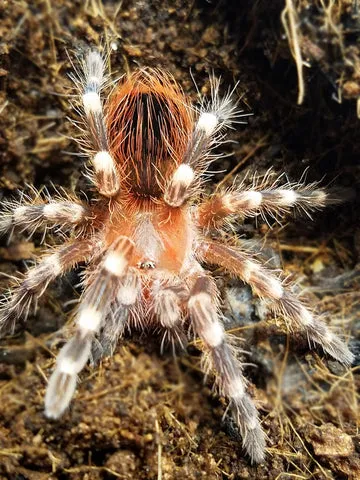
The substrate should be deep enough for burrowing, if the tarantula chooses. A mix of substrate materials is often ideal. A good substrate mix includes a combination of peat moss, coco fiber, and a bit of vermiculite or sphagnum moss. This provides excellent moisture retention and allows the tarantula to burrow. Decorate the enclosure with cork bark, artificial plants, and sturdy hides to create a secure environment where your tarantula can retreat. Avoid sharp objects and ensure all decorations are non-toxic. Providing hiding places is essential for security, helping your tarantula feel safe and secure. These elements contribute to a more enriching and stimulating environment for your G.W.K.
Temperature and Humidity
Giant White Knee Tarantulas thrive in a warm and humid environment. Maintain a temperature range of 75-85°F (24-29°C) using a heat lamp or a heat mat attached to the side of the enclosure. Avoid placing the heat source directly under the enclosure to prevent overheating. Humidity levels should be kept between 70-80%. You can achieve this by misting the enclosure once or twice a week, or more frequently if needed, depending on the ventilation and substrate type. Proper ventilation is important to prevent mold and mildew growth. Using a hygrometer to monitor humidity levels is crucial for ensuring optimal conditions. Consistent temperature and humidity are vital for the tarantula’s health and well-being, supporting proper molting and overall vitality.
Feeding Your Giant White Knee Tarantula
Proper nutrition is crucial for your Giant White Knee Tarantula’s health, growth, and longevity. Providing a varied diet and appropriate feeding schedule will ensure your tarantula thrives in captivity. Understanding the dietary needs of your G.W.K. is fundamental to its long-term health and well-being. This section details the best feeding practices to keep your tarantula healthy and well-nourished.
Diet and Feeding Frequency
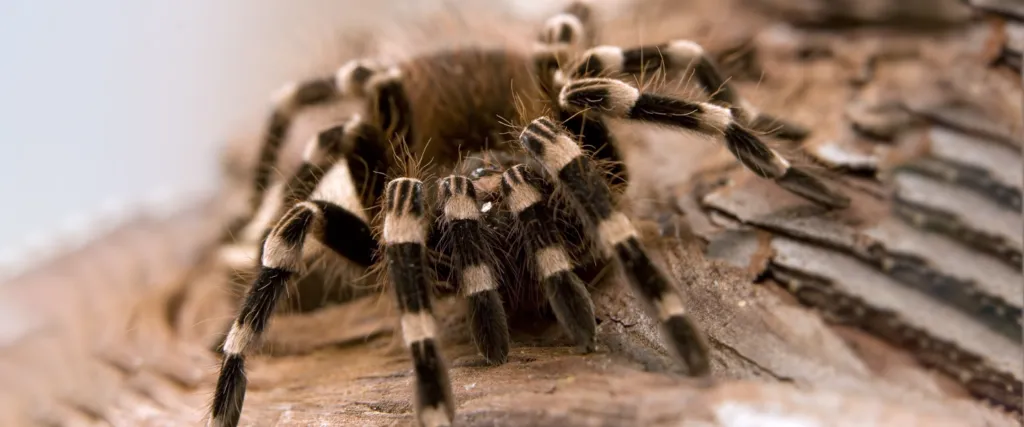
Giant White Knee Tarantulas are opportunistic eaters, readily consuming a variety of insects. A staple diet should consist of crickets, mealworms, and Dubia roaches. You can also offer other insects, such as superworms and locusts, for variety. The feeding frequency depends on the tarantula’s age and size. Spiderlings should be fed 2-3 times a week, while adults can be fed once a week or every other week. It’s important to remove any uneaten prey within 24 hours to prevent stress for your tarantula. Adjust the feeding schedule as needed, based on your tarantula’s appetite and overall condition. A well-fed tarantula will have a plump abdomen, while a hungry one may appear thin.
Watering and Hydration
Providing a constant source of fresh water is crucial for your G.W.K.’s hydration. Use a shallow water dish, such as a bottle cap or a small, non-tippable dish, filled with clean water. Ensure the water dish is always available and change the water regularly to prevent contamination. Misting the enclosure can also provide additional hydration, especially for younger tarantulas. Regular watering and misting, in conjunction with a good substrate, helps maintain the necessary humidity levels. Always use dechlorinated water to prevent harming your tarantula. Proper hydration is essential for the tarantula’s molting process and overall health.
Handling and Safety
While Giant White Knee Tarantulas are generally docile, handling them requires caution. Understanding their behavior and potential risks is crucial for the safety of both you and the tarantula. Proper handling techniques and safety precautions will minimize the risk of injury. Always prioritize the tarantula’s well-being and your own safety when interacting with your G.W.K.
Handling Guidelines
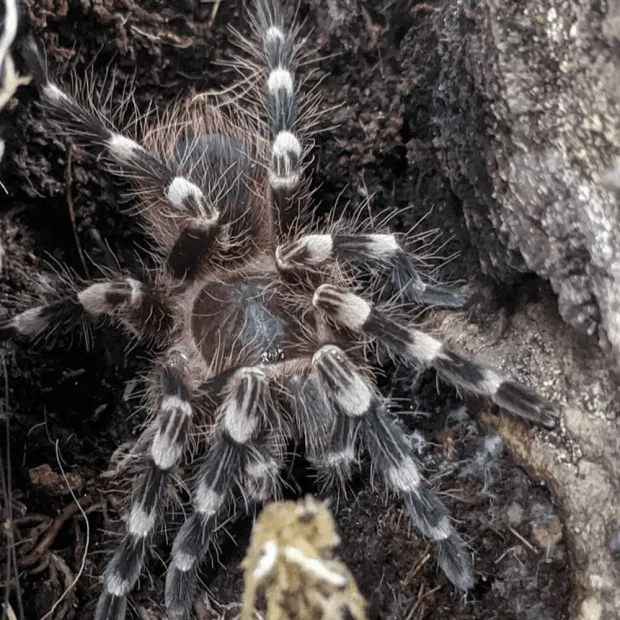
Handling should be kept to a minimum, as it can stress the tarantula. If you must handle your G.W.K., do so with extreme care. Gently encourage the tarantula to walk onto your open hand, avoiding sudden movements. Always handle the tarantula over a soft surface, such as a bed or a carpet, in case it falls. Never grab or squeeze the tarantula, as this can cause injury. It’s best to let the tarantula move at its own pace. Consistent, gentle movements will help maintain a safe and stress-free environment.
Safety Precautions
Giant White Knee Tarantulas have urticating hairs on their abdomen, which they can flick off as a defense mechanism. These hairs can cause skin irritation and should be avoided. Wash your hands thoroughly after handling the tarantula or touching anything in its enclosure. If you are bitten, while rare, it can be painful. Seek medical attention if you experience severe symptoms. Always supervise children around tarantulas and educate them about the potential risks. Maintaining a safe environment for both you and your tarantula is paramount.
Common Health Issues and Prevention
Like all living creatures, Giant White Knee Tarantulas can experience health issues. Understanding these potential problems and knowing how to prevent them is critical for their well-being. Regularly monitor your tarantula for any signs of illness. This section addresses common health concerns and provides guidance on how to keep your G.W.K. healthy.
Moulting Process
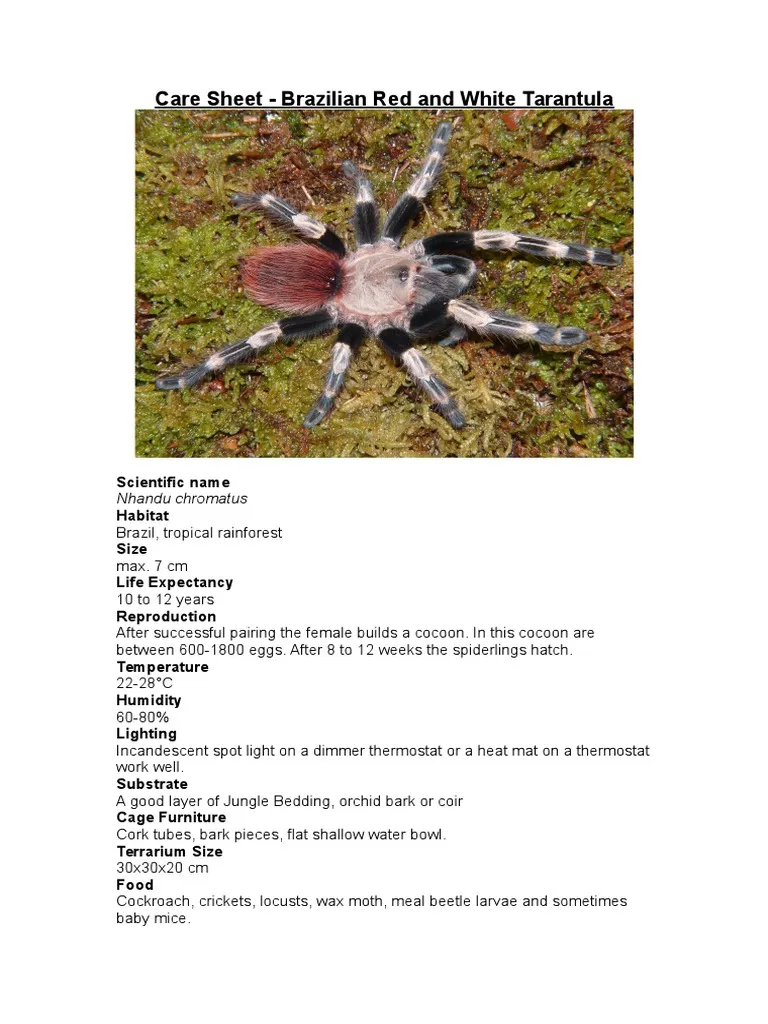
Moulting is a natural process where tarantulas shed their exoskeleton to grow. During this time, your tarantula will likely stop eating, become less active, and may flip onto its back. Do not disturb your tarantula during a molt. Provide adequate humidity to help facilitate the process. After moulting, the tarantula’s new exoskeleton will be soft, and it will take several days for it to harden. Wait a week or two before offering food, allowing the fangs to harden. Understanding the moulting process ensures you can support your tarantula during a vulnerable phase of its life.
Recognizing and Addressing Health Problems
Common health issues include mites, fungal infections, and dehydration. Mites are tiny parasites that can infest the tarantula and its enclosure. If you notice mites, quarantine your tarantula and clean the enclosure thoroughly. Fungal infections can occur if the environment is too humid or poorly ventilated. Improve ventilation and reduce humidity if you observe signs of a fungal infection. Dehydration can lead to weakness and lethargy. Ensure a constant supply of fresh water and maintain proper humidity levels. Regularly inspect your tarantula for any signs of illness, such as lethargy, loss of appetite, or unusual behavior. Consulting with an experienced tarantula keeper or a veterinarian specializing in exotic pets can be beneficial if you notice any health concerns. Prompt identification and treatment of health issues are key to maintaining your tarantula’s health.
Breeding and Reproduction
Breeding Giant White Knee Tarantulas can be a rewarding experience, but it requires specialized knowledge and careful planning. This section provides an overview of the breeding process, including the differences between males and females, and what to expect during reproduction. Successful breeding requires understanding the specific needs of this species and the proper environment.
Male vs Female Differences
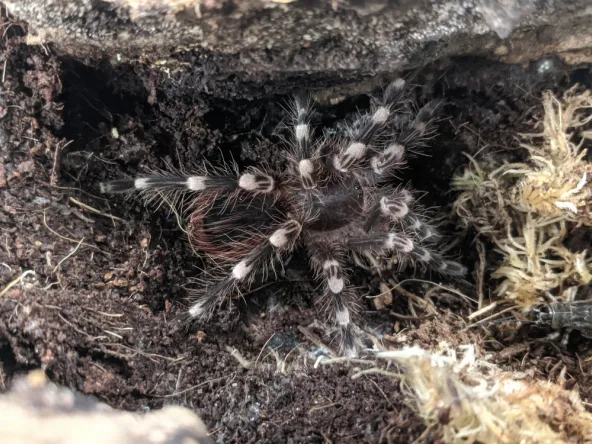
Identifying the sex of your tarantula is essential for breeding. Males and females have distinct differences. Males typically have tibial hooks on their front legs and bulbous pedipalps (the small appendages near the mouth) used for mating. Females are generally larger and have a more robust build. They also possess a spermatheca, the organ where they store the sperm. The easiest way to determine sex is through a molt. However, this requires careful examination using a bright light to inspect the epigastric furrow to look for the presence of a spermatheca.
Breeding Process
Breeding Giant White Knee Tarantulas requires careful preparation. You must introduce a mature male to a receptive female. This introduction should be done in the female’s enclosure to avoid stressing her. The male will signal his interest with courtship rituals, such as tapping on the substrate. If the female is receptive, mating will occur. After mating, separate the male from the female to prevent him from being eaten. The female will then lay an egg sac, which she will guard and protect. Incubation can take several weeks, and the spiderlings will emerge from the egg sac. Raising spiderlings is a challenging but rewarding process that requires specialized care and attention. Breeding Giant White Knee Tarantulas can contribute to the tarantula hobby while allowing you to enjoy the entire process.
Final Thoughts
Caring for a Giant White Knee Tarantula can be an incredibly rewarding experience. By following this care sheet, you’ll be well-equipped to provide your G.W.K. with a healthy, enriching, and fulfilling life. Remember to always prioritize your tarantula’s needs, observe its behavior, and learn from your experiences. The more you understand and appreciate these magnificent creatures, the more joy you’ll derive from your hobby. Enjoy the fascinating journey of tarantula keeping!
